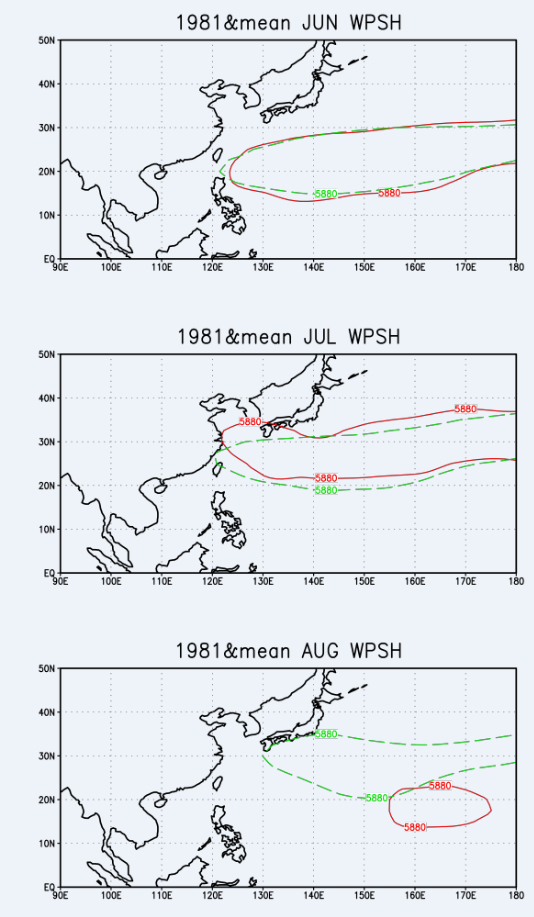Scientists Find An Unusual Westward Extension of the Western Pacific Subtropical High in Late Summer
Date:2016-08-23
Understanding the physical mechanisms involved in the variation of the western Pacific subtropical high (WPSH) is of considerable importance for summer climate prediction in China. In particular, an unusual westward extension and prolonged maintenance of the WPSH may lead to a heat wave and severe drought in southern China. Although it is generally believed that the El Ni?o–Southern Oscillation (ENSO) plays an important role in WPSH variation, the WPSH may also exhibit a persistent and significant anomaly in late summer (e.g., August 2013) under weak tropical SST forcing. By comparing the WPSH in 1981 and 2013, XUE Feng and FAN Fangxing from the Institute of Atmospheric Physics revealed the major factors, and their combined effects, impacting upon the WPSH anomaly in late summer under conditions of a weak tropical SST anomaly.

The western Pacific subtropical high (WPSH) represented by the 5880 gpm contour in June, July and August 1981 (left column) and 2013 (right column). For comparison, the climatological mean is represented by the dashed contour (units: gpm).
Despite the fact that both 1981 and 2013 were weak La Ni?a years, and the WPSH in June and July was close to normal, the WPSH anomalies in August were opposite, with a weakening in 1981 and a strengthening in 2013.
Prof. Xue explains: “The cold advection from Eurasian high latitudes and the convection of the western Pacific warm pool are two primary factors responsible for the WPSH anomaly under conditions of a weak tropical SST anomaly.” In August 1981, the spatial pattern of 500 hPa geopotential height was characterized by a meridional circulation with a strong ridge in the Ural Mountains and a deep trough in Siberia, which was favorable for the southward invasion of cold air from high latitudes, thereby reducing the geopotential height to the north of the WPSH. Moreover, an anomalous cyclonic circulation in the subtropical western Pacific, excited by enhanced warm pool convection, also contributed to the eastward retreat of the WPSH. By contrast, the influence from high latitudes was relatively weak in August 2013, due to a zonal circulation pattern over Eurasia, and the anomalous anticyclonic circulation induced by suppressed warm pool convection also facilitated the westward extension of the WPSH.
These findings, published in a paper recently accepted by Advances in Atmospheric Sciences, provide new clues for WPSH prediction. Seasonal forecasting may be largely limited due to the lack of strong tropical forcing. Instead of relying merely on long-range forecasting, we should place emphasis on monthly forecasting in order to further improve forecasting skill.
Reference
Xue, F., and F. Fan, 2016: Anomalous western Pacific subtropical high during late summer in weak La Ni?a years: Contrast between 1981 and 2013. Adv. Atmos. Sci., in press, doi: 10.1007/s00376-016-5281-1.
Contact:
Prof. XUE Feng, fxue@lasg.iap.ac.cn
